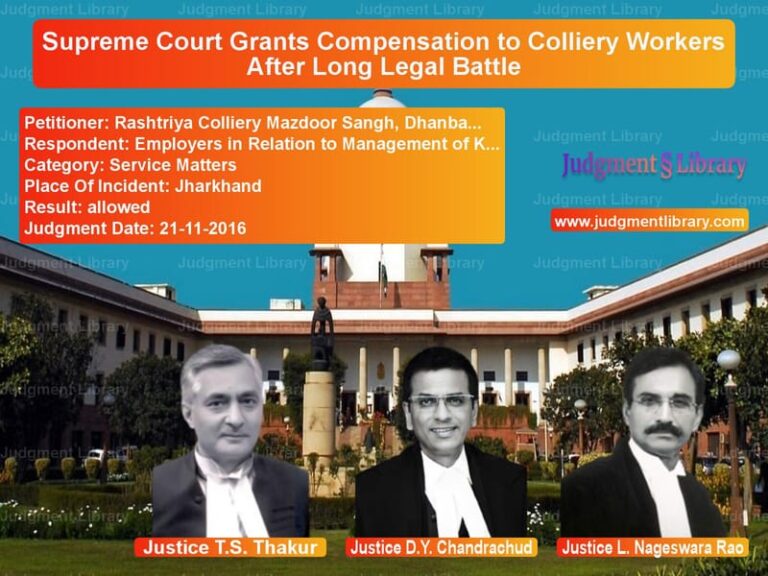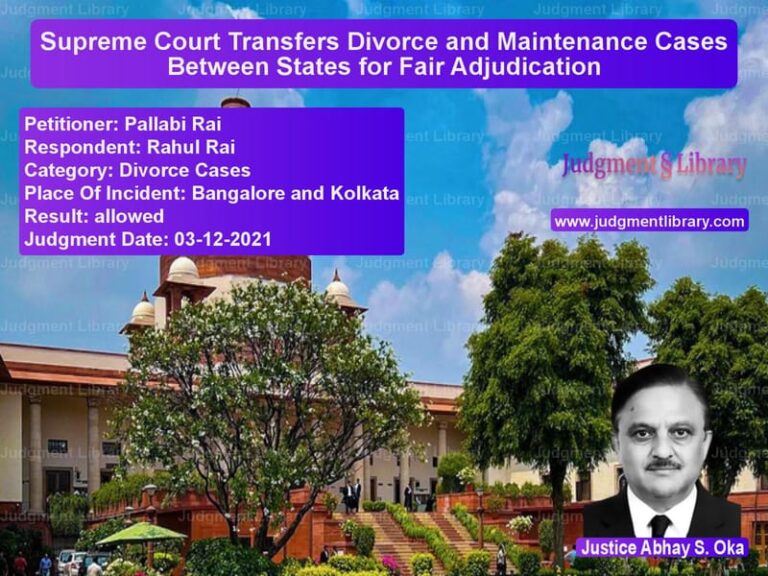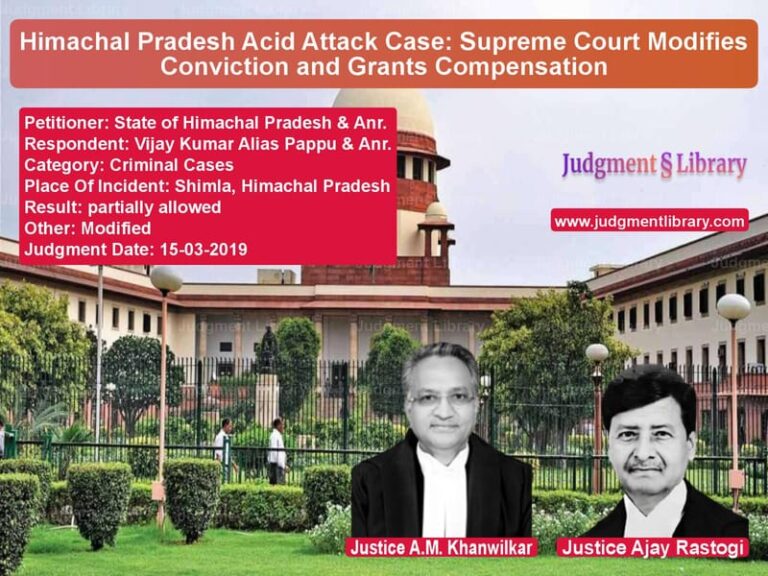Supreme Court Ruling on VAT Applicability for Mobile Crane Wire Ropes
The Supreme Court of India, in CTO, Anti Evasion, Circle III, Rajasthan, Jaipur vs. M/s Prasoon Enterprises, Jaipur, deliberated on the taxability of ‘Mobile Crane Wire Ropes’ under the Rajasthan Value Added Tax Act, 2003. The core issue was whether the wire ropes used in mobile cranes should be taxed at 4% under Entry 155 of Schedule IV or at 12.5% under the Residuary Entry in Schedule V.
This case highlights the importance of correctly classifying goods for tax purposes and the implications of different tax rates on businesses and government revenue.
Background of the Case
The dispute arose when the Commercial Tax Officer (CTO) conducted a survey at M/s Prasoon Enterprises’ premises. The company had been charging VAT at 4% on ‘Mobile Crane Wire Ropes’. However, the CTO determined that the applicable tax rate should be 12.5% under the Residuary Entry.
The respondent, M/s Prasoon Enterprises, contended that wire ropes are essential parts of mobile cranes and should be classified accordingly. The Rajasthan Tax Board and the High Court ruled in favor of the company, leading to an appeal by the CTO before the Supreme Court.
Petitioner’s Arguments (State of Rajasthan – CTO)
- The wire ropes do not have a specific entry under Schedule IV of the VAT Act and should therefore fall under the Residuary Entry in Schedule V, which prescribes a 12.5% tax rate.
- The goods in question should not be considered a part of mobile cranes since they can be used separately in various applications.
- Allowing the 4% tax rate would create an undue advantage for certain businesses, leading to revenue loss for the government.
Respondent’s Arguments (M/s Prasoon Enterprises)
- The wire ropes are essential for the operation of mobile cranes and should be classified as parts of mobile cranes under Entry 155 of Schedule IV.
- Mobile cranes cannot function without these wire ropes, making them integral to the machinery.
- The Rajasthan Tax Board and the High Court had previously ruled in their favor, upholding the 4% tax rate.
- Applying the higher tax rate would lead to inconsistencies in tax classification across the country.
Supreme Court’s Observations
The Supreme Court examined the relevant provisions of the VAT Act and past judicial precedents. It emphasized the importance of distinguishing between an accessory and an essential part of a machine.
“A thing is a part of the other if the other is incomplete without it.” Applying this principle, the Court ruled that wire ropes are integral to mobile cranes as they cannot function effectively without them.
The judgment cited previous cases, including M/s Annapurna Carbon Industries vs. State of Andhra Pradesh (1976) and Commissioner of Central Excise, Delhi vs. Insulation Electrical Private Limited (2008), emphasizing that an item qualifies as a part if its absence renders the main machinery non-functional.
Key Considerations in the Judgment
- Functional Necessity: The Supreme Court ruled that wire ropes are integral to mobile cranes and are not merely accessories.
- Precedents on Classification: The Court relied on prior rulings where essential parts of machinery were given specific tax treatment.
- Revenue Considerations: The ruling underscored the need for consistency in tax classification to prevent revenue loss and undue business advantages.
Final Judgment
- The Supreme Court upheld the High Court’s decision that mobile crane wire ropes fall under Entry 155 of Schedule IV and are taxable at 4%.
- The appeal filed by the Rajasthan CTO was dismissed.
- The judgment reinforced the principle that integral machine components should be taxed as part of the machinery rather than under a residual tax category.
Implications of the Verdict
The ruling has several implications:
- Clarity on Tax Classification: The judgment establishes that wire ropes used in mobile cranes are taxable at 4%, providing clarity for businesses.
- Precedent for Future Cases: The ruling serves as a reference for classifying machinery parts under the appropriate VAT schedule.
- Relief for Traders: Businesses selling mobile crane wire ropes benefit from a lower tax rate, making the goods more competitively priced.
- Revenue Impact: The decision ensures that revenue authorities do not incorrectly classify essential components, avoiding unnecessary tax burdens on businesses.
This case underscores the importance of precise tax classification to balance business interests and government revenue collection. The Supreme Court’s judgment reinforces the principle that if a component is essential to the functioning of machinery, it should be taxed as part of the machinery rather than under a general or residual tax category.
Petitioner Name: CTO, Anti Evasion, Circle III, Rajasthan, Jaipur.Respondent Name: M/s Prasoon Enterprises, Jaipur.Judgment By: Justice Abhay Manohar Sapre, Justice Dinesh Maheshwari.Place Of Incident: Rajasthan, Jaipur.Judgment Date: 26-03-2019.
Don’t miss out on the full details! Download the complete judgment in PDF format below and gain valuable insights instantly!
Download Judgment: CTO, Anti Evasion, C vs Ms Prasoon Enterpri Supreme Court of India Judgment Dated 26-03-2019.pdf
Direct Downlaod Judgment: Direct downlaod this Judgment
See all petitions in Income Tax Disputes
See all petitions in GST Law
See all petitions in Tax Refund Disputes
See all petitions in Customs and Excise
See all petitions in Judgment by Abhay Manohar Sapre
See all petitions in Judgment by Dinesh Maheshwari
See all petitions in dismissed
See all petitions in supreme court of India judgments March 2019
See all petitions in 2019 judgments
See all posts in Taxation and Financial Cases Category
See all allowed petitions in Taxation and Financial Cases Category
See all Dismissed petitions in Taxation and Financial Cases Category
See all partially allowed petitions in Taxation and Financial Cases Category







